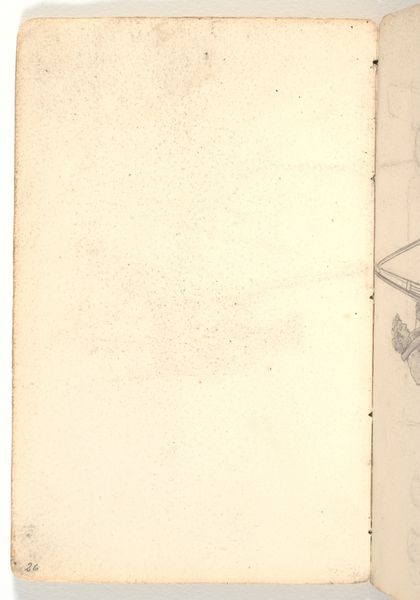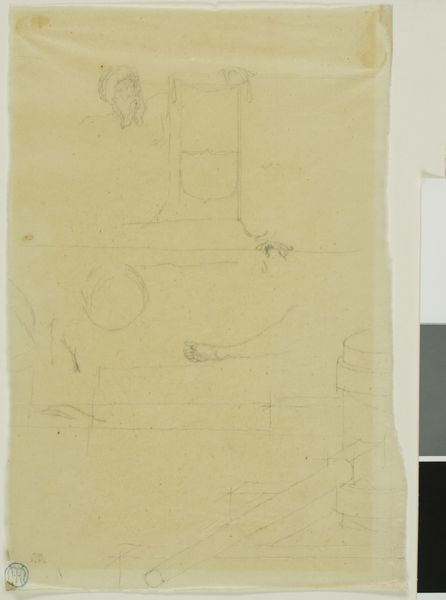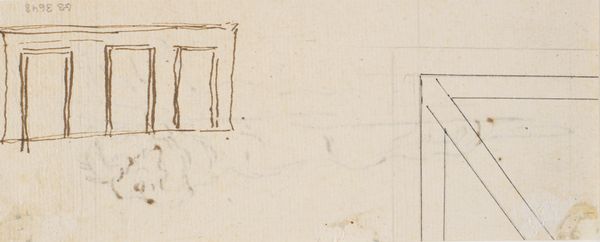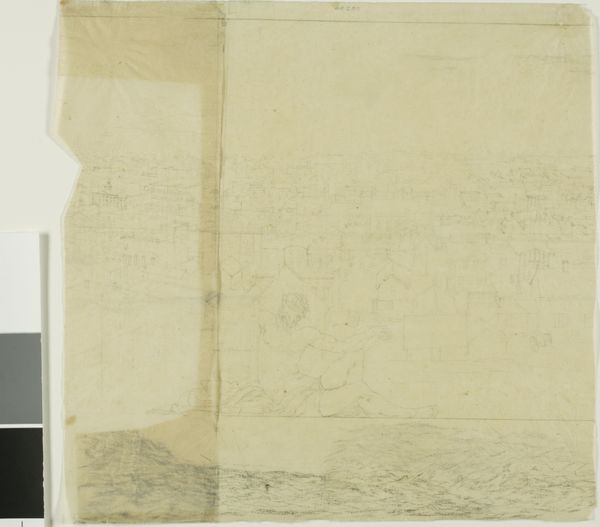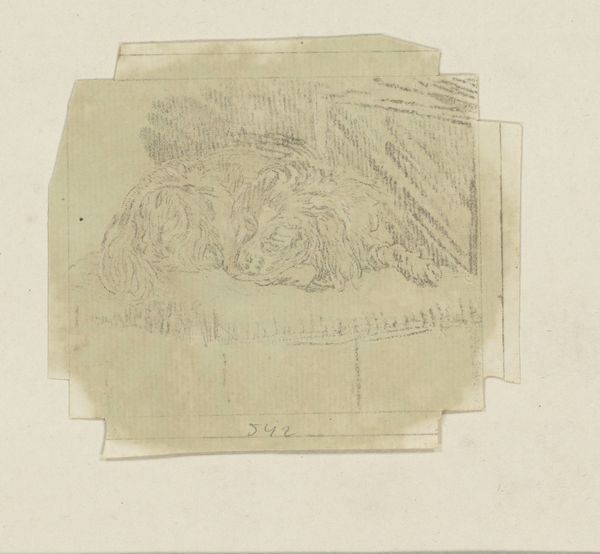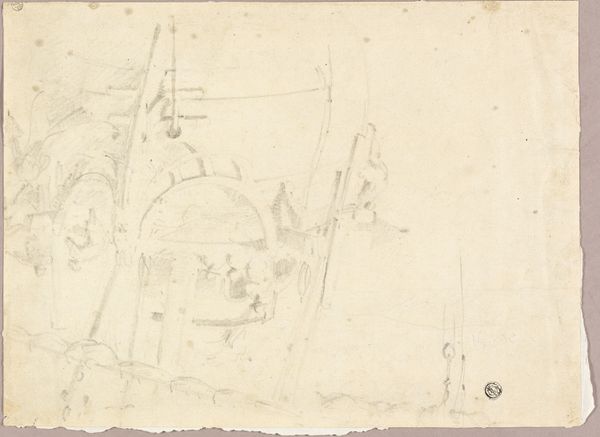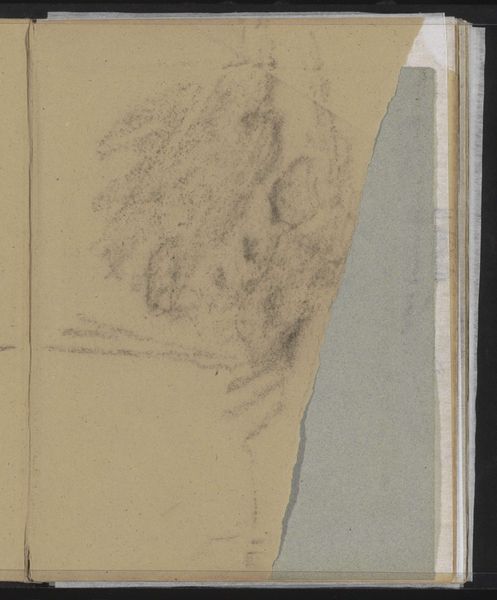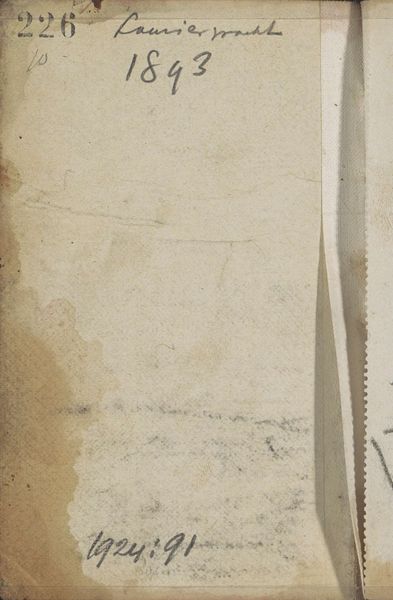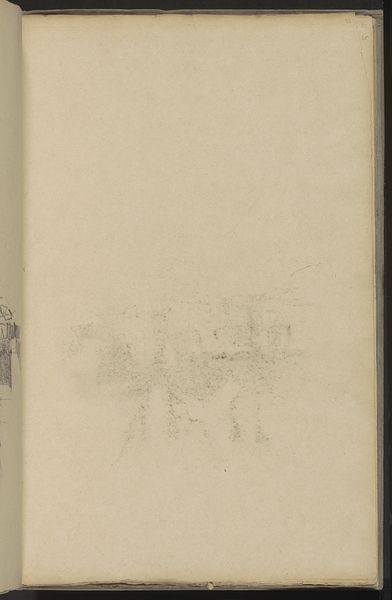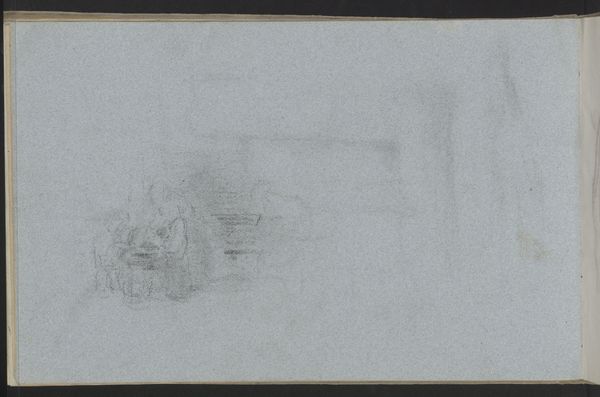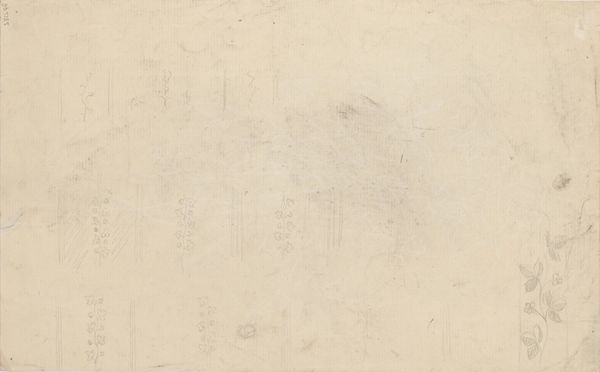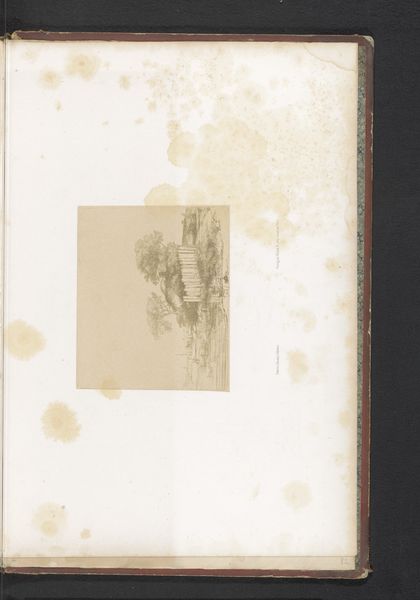
drawing, paper, pencil, architecture
#
drawing
#
aged paper
#
homemade paper
#
sketched
#
light coloured
#
sketch book
#
incomplete sketchy
#
hand drawn type
#
paper
#
personal sketchbook
#
fading type
#
geometric
#
pencil
#
line
#
academic-art
#
design on paper
#
architecture
#
realism
Dimensions: height 195 mm, width 140 mm
Copyright: Rijks Museum: Open Domain
Curator: Egidius Stephanus Heynincx created this intriguing drawing, titled "Deel van een gebouw," sometime between 1823 and 1902. It's rendered in pencil on paper. Editor: The drawing style immediately makes me think of architectural renderings – the kind used to plan or document structures, it's like a ghost of a building, rendered with precision but somehow, so frail. Curator: Indeed. The sketch's incomplete and fading quality contributes to a dreamlike essence. The meticulous details, hand-drawn letters, geometric structures, all give this academic feel. There’s a sense of an ongoing, unfolding creative exploration here. Editor: The building is quite austere in form and lacking the usual embellishments you'd expect in formal academic works from that era. To me, that invokes discussions around power. Monumental architecture of that sort usually makes proclamations of status and strength. How does an incomplete structure influence or soften these messages? Curator: The symbolism of a fragmented building can suggest societal or personal fragmentation. It offers multiple layers of interpretation—ruin, progress, a foundation for the future. I imagine Heynincx chose this form as a cultural metaphor. This sketch, like ancient ruins, reminds us that even the most powerful structures erode. Editor: And how those narratives about erosion often conveniently absolve us from the work of dismantling unjust structures ourselves. Looking at architectural fragments this way reveals more than just the beauty of the "classical". We also get a perspective on the sociopolitical forces that dictate the life cycles of particular kinds of buildings. Curator: What an interesting angle! It underscores the idea that artistic endeavors don't exist in a vacuum. I notice Heynincx carefully uses shadow, offering depth to a form reduced to only lines. What do you observe regarding the artist’s mark-making? Editor: The hatching style creates areas of gray to suggest volume in the stones. Its consistent density allows the geometric forms to exist on what's mostly, actually flat space. Even those details remind me of the historical position of architecture as both a science and an art form. The drawing embodies these conflicting traditions, in my mind. Curator: The emotional and cultural weight of architecture as form is strong. Thinking about those layers makes me feel connected to past generations who’ve also looked to buildings as lasting achievements. Editor: Yes, but perhaps a more useful insight would be that nothing—especially oppressive legacies built of brick and stone—is actually built to last, after all.
Comments
No comments
Be the first to comment and join the conversation on the ultimate creative platform.
